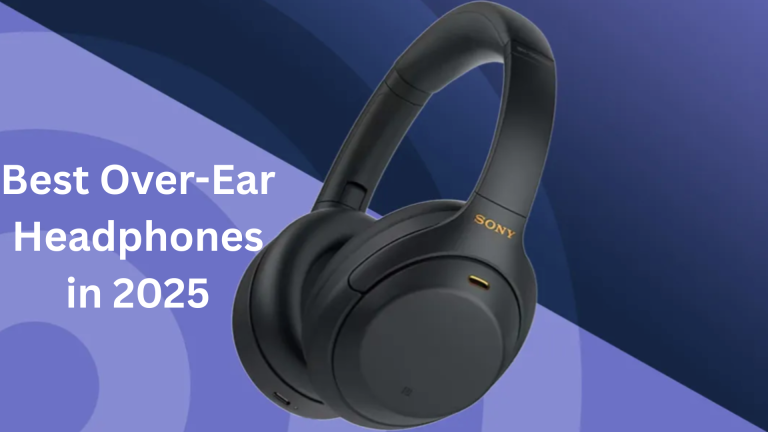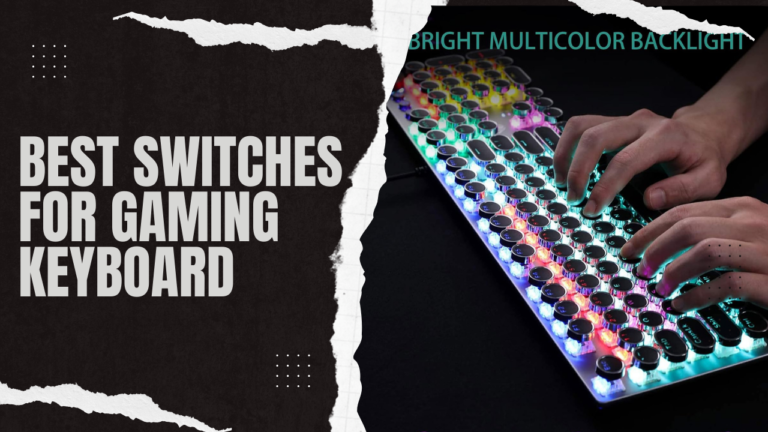Breaking News: Power Meets Price — The Best Cheapest Gaming Laptops of
Affordable gaming laptops are rewriting the rules. We reveal the best budget-friendly machines of that deliver smooth 1080p performance under $1,000.
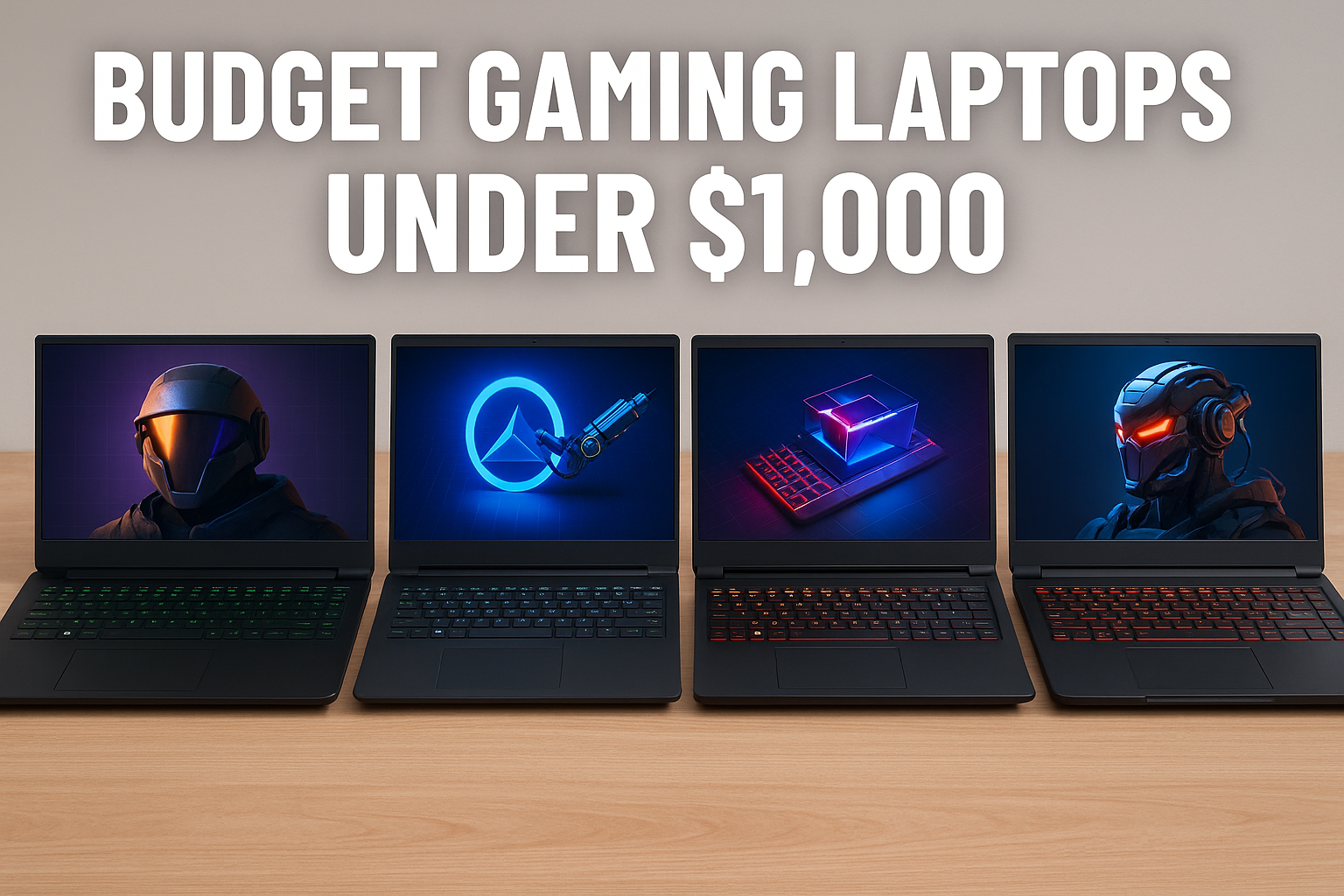
The race to find the best cheapest gaming laptop in is no longer just for hardcore gamers—it’s now a headline topic for students, casual players, and even first-time buyers. Not long ago, low-cost gaming laptops were seen as slow, heavy, and unreliable. But things have changed fast. Big names like Dell, HP, MSI, and Acer are now building affordable machines that can play popular titles such as Fortnite and Valorant at smooth 1080p, without costing more than $1,000. For many, this is the first time real gaming power feels within reach.
Tech reviewers and industry experts agree the shift comes from stronger GPUs, better cooling, and smarter designs that balance performance with price. In this guide, we’ll highlight the laptops making headlines, explain the specs that truly matter, and show how budget options are proving that you don’t need deep pockets to enjoy serious gaming anymore.
Editor’s Menu — Today’s 7 Budget Gaming Picks
ASUS Chromebook CM1402CM2A
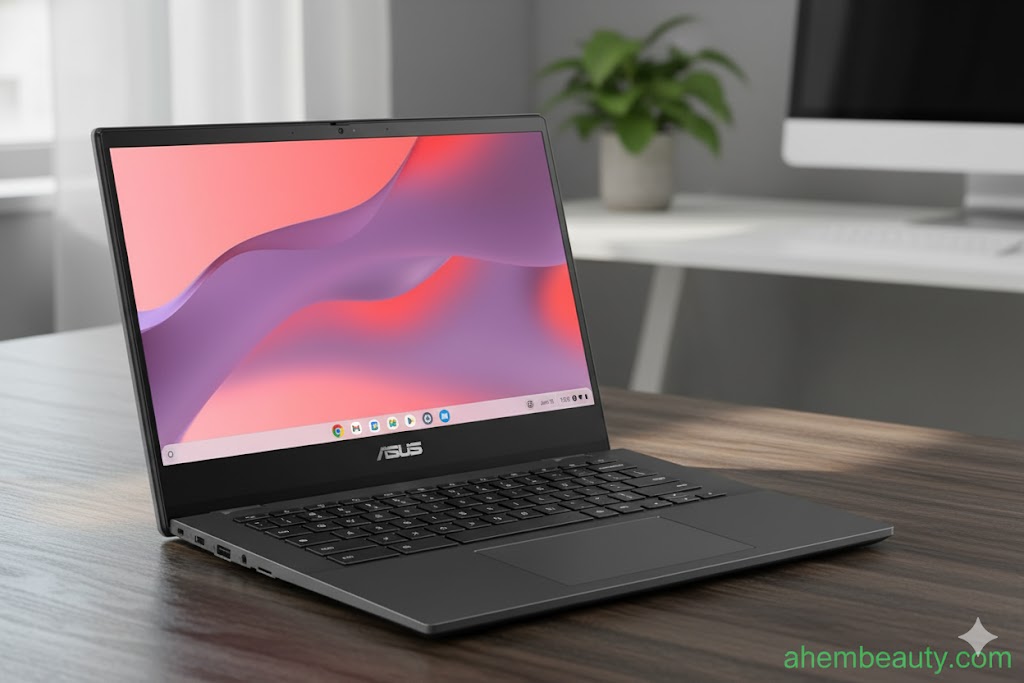
This isn’t a flashy notebook with RGB lighting; it’s a solid, no-nonsense build. The 14-inch HD NanoEdge display keeps bezels slim and glare under control, making it easy on the eyes in classrooms and coffee shops. More impressive is the ruggedness. The chassis is rated US MIL-STD-810H, meaning it can withstand bumps and drops, while a spill-resistant keyboard protects against everyday accidents. ASUS even adds an Antimicrobial Guard that helps keep surfaces hygienic, a thoughtful touch in today’s mobile world.
- Processor: MediaTek Kompanio 520 (MT8186), 8 cores, up to 2.05 GHz
- Memory & Storage: 4 GB LPDDR4X RAM + 64 GB eMMC
- Wireless: Wi-Fi 6, Bluetooth 5.3
- Display: 14-inch HD (1366×768), anti-glare NanoEdge
- Extras: Antimicrobial Guard, spill-resistant keyboard
- Webcam: HD with lighting adjustment + physical shutter
- Ports: 1× USB-A 3.2 Gen 1, 2× USB-C 3.2 Gen 1 (display + PD), 3.5 mm combo jack, microSD slot, Kensington lock
- Weight: ~3.1 lbs
At its heart, the Kompanio 520 chip isn’t built for AAA titles, but it’s more than capable of running web apps, streaming, and multitasking with ease. The real story, though, is in cloud gaming. Pair it with GeForce NOW or Xbox Cloud Gaming, and suddenly it plays like a far more expensive notebook. With Wi-Fi 6, latency drops, making casual gaming smoother than many expect from a Chromebook.
Reviewers consistently highlight its 12-hour battery life, which puts it ahead of rivals in this bracket. Combined with a lightweight body just over 3 pounds, it becomes a practical travel companion—ideal for students carrying it between classes or professionals working on the go. Cooling is efficient, so it stays comfortable on the lap even during extended sessions.
Analysts covering value laptops note that this Chromebook reflects the industry’s pivot toward efficiency over excess. Instead of overpromising, ASUS has built a notebook that nails the essentials—reliable performance, strong connectivity, and all-day stamina. For anyone seeking the best cheap gaming notebook, it’s a reminder that smart design and cloud services are now redefining what counts as “gaming-ready.”
| Pros | Cons |
|---|---|
| Rugged MIL-STD-810H build with spill-resistant keyboard | HD (1366×768) resolution feels dated vs. FHD |
| Antimicrobial Guard for extra hygiene | 4 GB RAM / 64 GB storage limits heavy local workloads |
| Wi-Fi 6 + Bluetooth 5.3 for fast, low-latency connectivity | No backlit keyboard |
| ~12-hour battery; cool, quiet operation | Speakers are basic—headphones recommended |
| ~3.1 lb, easy to carry | Not for native AAA—cloud gaming is essential |
| Physical webcam shutter for privacy |
The ASUS Chromebook CM1402CM2A doesn’t promise blockbuster frame rates, but it delivers durability, long life, and reliable connectivity—at a price that keeps it in the headlines. For students, casual gamers, and mobile users who want resilience and cloud-powered play, it’s a smart, dependable choice and a deserving entry in our top budget gaming laptops roundup.
KAIGERR TX16PRO
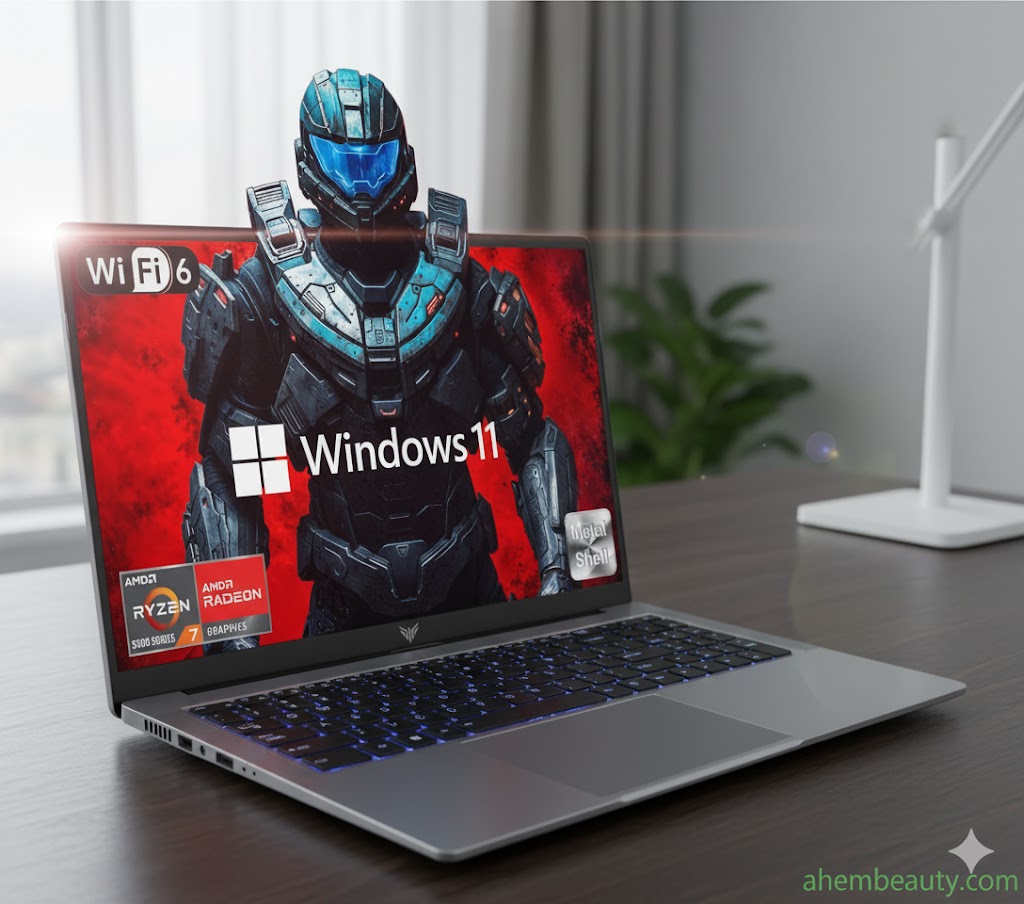
Budget laptops usually sit in the background of gaming discussions, but the KAIGERR TX16PRO is starting to change that narrative. Analysts tracking the entry-level market say this model “behaves more like a mid-tier machine” thanks to its Ryzen engine, upgrade headroom, and surprisingly sharp display. It’s the kind of system that shows why the least expensive gaming laptop category is no longer a compromise—it’s a newsworthy battleground.
In an era where thin bezels and flashy RGB make headlines, the TX16PRO takes a quieter but practical approach. Its 16-inch IPS screen favors clarity, color depth, and smooth motion over gimmicks. Students call it “big enough for editing and Netflix, but still light for a backpack.” The anti-glare finish keeps reflections down in classrooms or coffee shops, making it usable where glossy panels often fail. At just over 3.5 pounds, the size doesn’t feel punishing on the move.
- Processor: AMD Ryzen 7 5700U, 8-core / 16-thread CPU with boost speeds up to 4.3 GHz
- Memory & Storage: 16 GB DDR4, expandable to 64 GB | 512 GB NVMe SSD, expandable to 2 TB
- Display: 16-inch IPS, wide color, high-refresh, anti-glare
- Wireless: Wi-Fi 6, Bluetooth
- Ports: 2× USB 3.2, 1× full-function USB-C, 1× HDMI, 3.5 mm audio/mic, microSD slot, USB-C DC jack, webcam
- Support: 12-month repair coverage + unlimited technical support
At its heart is AMD’s Ryzen 7 5700U, a processor more often seen in higher-priced notebooks. Eight cores and sixteen threads allow it to juggle multiple apps without slowdown. Reviewers describe it as “desktop-like power in a budget frame.” Paired with 16 GB of RAM, multitasking feels effortless—streaming, editing, and browsing side by side.
Graphics remain integrated, so don’t expect ultra-high AAA settings. But esports titles run steadily at moderate presets, and cloud platforms like GeForce NOW transform the experience when paired with Wi-Fi 6. Industry watchers say this reflects a larger shift: “cloud gaming is letting budget devices punch above their weight.”
Battery life is competitive but not class-leading. In mixed use—emails, editing, light gaming—it lasts a full workday. Heat is managed well, with fans kicking in quietly during heavier loads. The overall package works for students moving between lectures, or professionals who want a large screen that’s still portable enough for a train ride.
What makes the TX16PRO stand out is its expandability. Unlike many budget rivals locked into fixed builds, this laptop grows with you—RAM up to 64 GB, storage up to 2 TB. Analysts argue this is “future-proofing on a budget,” rare in this segment. For buyers tired of laptops aging out too quickly, that’s a clear advantage.
| Pros | Cons |
|---|---|
| Ryzen 7 5700U delivers high responsiveness for everyday and professional workloads | Integrated graphics limit AAA gaming without cloud support |
| 16-inch IPS panel delivers crisp visuals with vibrant colors and fluid motion | Plastic chassis feels less premium than aluminum competitors |
| Expandable RAM and storage (64 GB / 2 TB) extend usable life | Battery life trails Chromebook-style devices |
| Wi-Fi 6 guarantees faster connections and smooth, low-latency cloud gaming | Speakers are serviceable but lack depth |
| Wide port selection adds flexibility for modern setups |
The KAIGERR TX16PRO isn’t here to compete with flagship rigs—it’s here to redefine expectations for budget buyers. With a capable Ryzen processor, a large and usable display, and expansion options that stretch its lifespan, it strikes a balance of power and practicality. For students, creators, or gamers willing to lean on cloud services, it’s one of the most compelling entries in our seven, showing how smart engineering is reshaping the budget category.
Acer Aspire 3 (A315-24P)
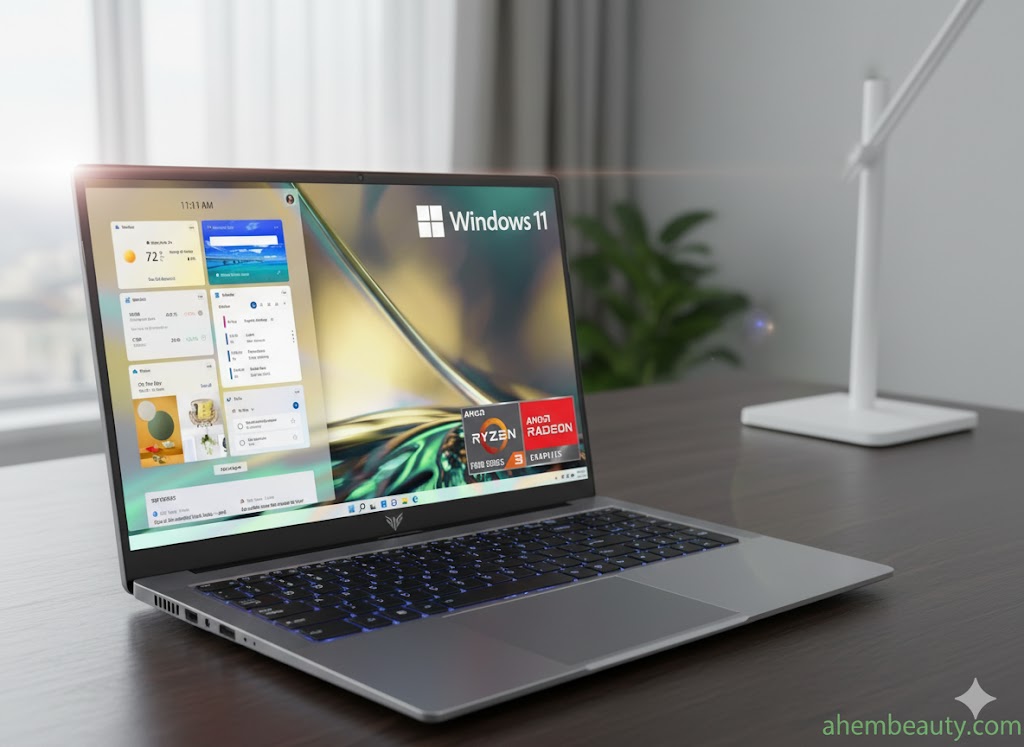
From the expandable KAIGERR TX16PRO, we now shift to something leaner and travel-ready. The Acer Aspire 3 (A315-24P) proves that not every budget notebook needs to flex massive specs to stand out. Instead, it focuses on purposeful design, dependable performance, and family-friendly usability. Analysts covering the entry-level segment often describe it as “a gateway machine that does more than you’d expect at this tier.” That’s what earns it a place among our seven, especially for readers searching for the best and cheapest gaming laptop that doubles as an everyday workhorse.
Acer clearly designed the Aspire 3 for mobility. At under 4 pounds, it feels light in hand, and the thin chassis makes it easy to slip into a backpack. Reviewers call it “a laptop you don’t mind carrying all day.” The 15.6-inch Full HD panel with a 16:9 ratio keeps visuals sharp and colors balanced. Narrow bezels add immersion, making video streams and light gaming feel more engaging. The absence of keyboard backlighting is a reminder of its entry-level position, but the trade-off comes with extra portability.
- Processor: AMD Ryzen 3 7320U, quad-core processor with integrated Radeon graphics
- Memory & Storage: 8 GB LPDDR5 onboard RAM | 128 GB NVMe SSD
- Display: 15.6-inch Full HD screen, IPS technology, 16:9 ratio, slim bezels
- Webcam & Audio: HD front camera with TNR (Temporal Noise Reduction); Acer PurifiedVoice with AI Noise Reduction
- Wireless: Wi-Fi 6 (802.11ax) with 2×2 MU-MIMO
- Cooling: 78% larger fan surface, +17% thermal capacity
- Ports: 1× USB-C 3.2 Gen 2 (DisplayPort + charging), 2× USB-A 3.2 Gen 1, 1× HDMI 2.1 with HDCP, audio jack, DC-in
- Weight: ~3.9 lbs
The Aspire 3 isn’t chasing esports glory, but the Ryzen 3 7320U ensures daily computing feels responsive. Start-up is swift, web navigation is seamless, and switching between tasks happens without lag. For graphics, its integrated Radeon unit manages casual play—covering indie releases, older blockbuster titles, and web-based games without issue. Pair it with cloud platforms over Wi-Fi 6, and the experience expands significantly. One student tester said, “it’s the first budget laptop that felt like it could keep up with both my homework and my downtime.”
Improved thermals are the unsung hero here. Acer redesigned the cooling with a 78% increase in fan surface area, giving it 17% more thermal headroom. The result? Cooler laps and quieter operation during longer study sessions or video calls. Battery life stretches comfortably through a school day, though heavier loads (gaming or streaming) may demand a charger before bedtime.
Industry watchers note that Acer isn’t reinventing the wheel—it’s refining basics that matter. Stable wireless, a crisp screen, and upgraded cooling make this laptop a balanced entry-level choice. The Aspire 3 shows how even lower-cost machines can benefit from modern silicon and thoughtful thermal engineering.
| Pros | Cons |
|---|---|
| Lightweight, thin design built for travel | 128 GB SSD fills quickly without external storage |
| 15.6-inch Full HD display with slim bezels for sharper visuals | Integrated graphics limit heavy gaming |
| Wi-Fi 6 ensures strong, stable connections for work and play | No backlit keyboard |
| Thermal improvements keep performance consistent | Battery life drops faster under demanding use |
| AI-powered webcam and voice filtering enhance video calls | |
| Affordable price point for students and families |
The Acer Aspire 3 isn’t trying to be a powerhouse. Instead, it positions itself as a smart, accessible option for families, students, and casual users. With Ryzen 3 performance, a sharp IPS display, and dependable Wi-Fi 6, it balances portability with daily usability. For buyers who want reliability first and gaming as a bonus, the Aspire 3 stands as a worthy inclusion in our seven—proving that even modest machines can earn their spot in the budget gaming conversation.
Dell Inspiron Plus
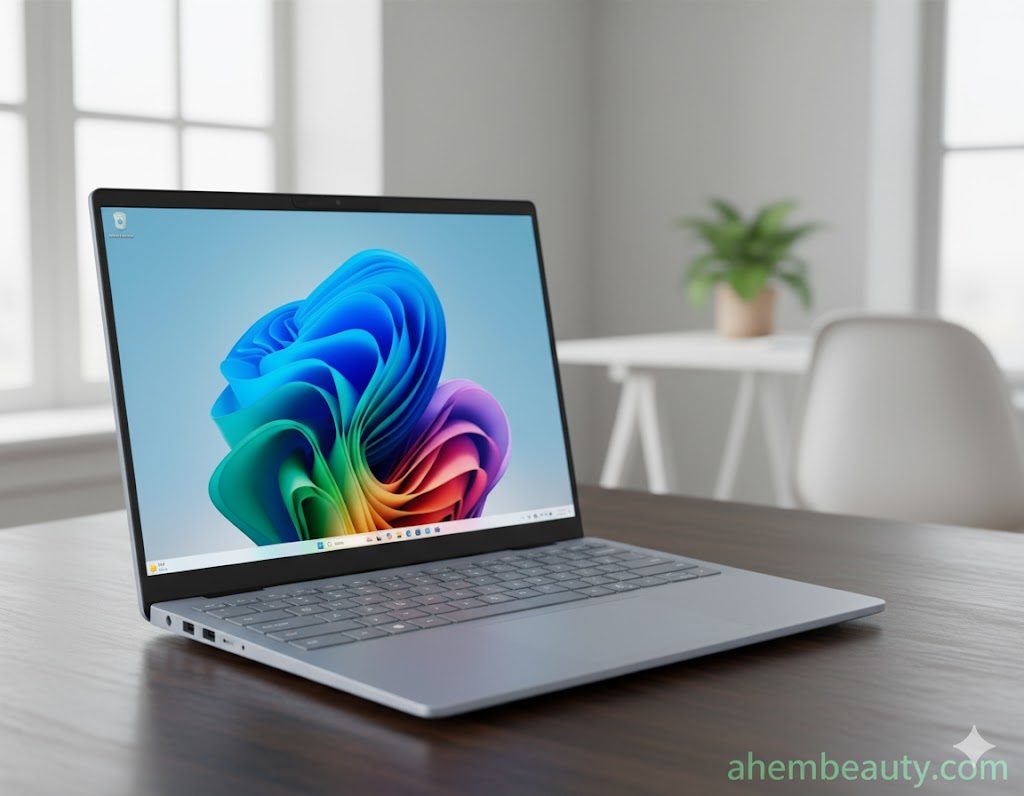
From Acer’s family-friendly Aspire 3, we now move to something more ambitious. Dell’s Inspiron Plus enters the conversation with a focus on AI-driven performance and premium reliability at an accessible price point. Industry analysts say this lineup “bridges the gap between affordability and forward-looking tech.” For buyers comparing value options, this machine stands out in our seven as the best cheapest gaming laptop that also prepares you for the newest wave of AI-assisted computing.
Dell has kept the design sleek yet purposeful. Aluminum finishing gives it a sturdier, more premium feel than many plastic-bodied rivals. The frame undergoes military-grade durability testing, making it a dependable travel companion for professionals and students alike. Reviewers note it “feels like a laptop you won’t have to baby,” and that assurance is rare in the entry-to-mid price range.
- Processor: Latest Intel Core platform with advanced AI compute engines
- Memory & Storage: Configurable up to 16 GB RAM | 512 GB NVMe SSD
- Display: 15.6-inch Full HD panel, wide viewing angles, anti-glare
- Graphics: Integrated Intel Iris Xe, suitable for productivity and light gaming
- Wireless: Wi-Fi 6 + Bluetooth for reliable connectivity
- Audio/Visual: Enhanced sound tuning + vivid display optimization
- Build: Military-grade tested aluminum chassis
- Service: 6 months Dell Migrate tool included
The selling point here isn’t just raw numbers; it’s the infusion of AI features directly into the platform. Dell promotes the system’s ability to draft emails, summarize documents, or generate creative assets in real time. In daily use, that translates to smoother workflows—blog writers, coders, and students all benefit from tasks that finish quicker with less strain on the CPU.
Gaming is competent at this tier. With Iris Xe graphics, casual titles and esports staples run well at medium settings. More demanding titles require either reduced detail or cloud-based support, but the improved cooling system ensures stability. Reviewers call it “a laptop that never feels stressed even when you are,” thanks to efficient thermal design.
Efficiency is where Dell’s Inspiron Plus shines. Optimized power management stretches usage through a workday, while the chassis remains cooler and quieter than expected. At just over 4 pounds, it’s not featherlight, but the added sturdiness is a trade-off many are happy with. Commuters and remote professionals will value its balance between size and resilience.
Industry voices highlight Dell’s commitment to building laptops that last. By combining AI integration, scalable performance, and proven durability, the Inspiron Plus appeals to users who want more than short-term value. Analysts often point to it as “future-proofing made practical.”
| Pros | Cons |
|---|---|
| Intel’s newest AI compute engines enhance productivity | Iris Xe graphics limit AAA gaming performance |
| Solid aluminum build, tested for military-grade durability | Slightly heavier than ultra-thin competitors |
| Full HD display with accurate colors and anti-glare protection | Battery life dips with intensive creative or gaming workloads |
| AI-driven features save time in work and creative tasks | Limited to integrated GPU, no discrete option at this tier |
| Strong audio/visual tuning for calls, movies, and content creation | |
| Includes Dell Migrate tool for easy setup |
The Dell Inspiron Plus proves that innovation doesn’t need to come with a luxury price tag. With AI at its core, sturdy design, and dependable everyday performance, it sets itself apart in the budget category. While it won’t replace a high-end gaming rig, it delivers versatility that blends study, work, and light play into one package. That balance secures its place in our top seven, showing how the budget market is quickly embracing the future of computing.
KUU XBook Pro
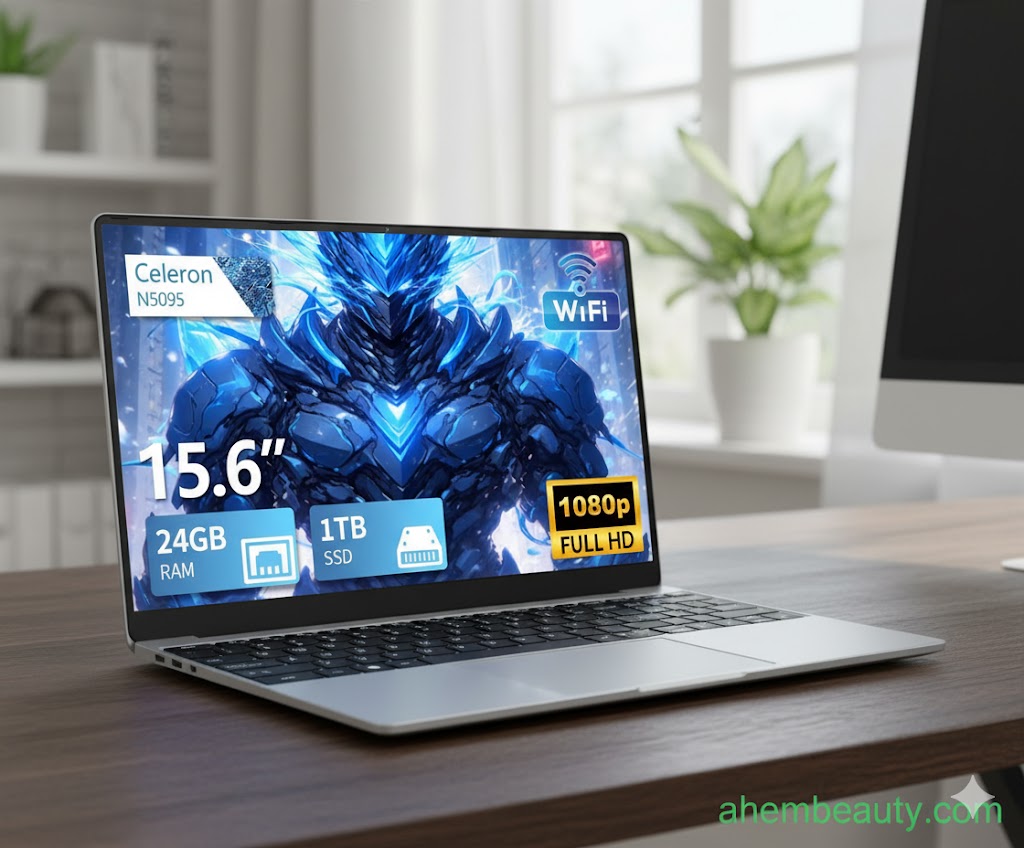
After Dell’s Inspiron Plus and its AI-first ambitions, the roundup now pivots to a lighter, more travel-friendly contender: the KUU XBook Pro. This notebook represents a different angle in the budget category—balancing lightweight portability with thoughtful extras like fingerprint security and a high-resolution screen. Tech writers often frame it as “a stylish contender that proves budget machines can feel premium.” For buyers exploring good and cheap gaming laptops, this model offers an interesting blend of everyday utility and casual play.
First impressions matter, and the XBook Pro makes one quickly. Its thin chassis weighs under 4 pounds, dressed in a finish that feels more premium than its price suggests. The 15.6-inch Full HD IPS panel provides clear visuals and consistent color accuracy, with narrow bezels expanding the view without increasing bulk. Reviewers note it “handles both work projects and entertainment equally well,” which is not common in this category. A full-sized keyboard ensures comfortable typing, while the integrated fingerprint reader adds an extra layer of personal security.
- Processor: Intel Celeron N5095, quad-core processor with burst frequency up to 2.9 GHz
- Memory & Storage: 12 GB DDR4 RAM | 512 GB SSD
- Display: 15.6-inch Full HD IPS, 1920×1080 resolution, slim bezels
- Graphics: Integrated Intel UHD Graphics
- Security: Fingerprint recognition for fast login
- Wireless: Wi-Fi 5, Bluetooth
- Ports: USB 3.0, USB 2.0, mini-HDMI, headphone jack, DC-in
- Weight: ~3.7 lbs
The XBook Pro relies on the Intel Celeron N5095 to deliver dependable day-to-day use. While not built for heavy workloads, it keeps web browsing, office apps, and streaming fluid. Boot speeds are quick thanks to the SSD, and 12 GB RAM and a 512 GB SSD outpaces many competing entry-level laptops. Integrated Intel UHD Graphics cover lightweight gaming: indie releases, browser-based titles, and older blockbusters remain playable, while cloud gaming options expand its reach further when internet speeds are solid.
Portability is one of its clear wins. The slim profile and ~3.7 lb weight make it easy to carry between classrooms, offices, or coffee shops. Battery life spans most of a workday, though heavier use (streaming or gaming) reduces runtime. Cooling remains efficient, preventing thermal throttling even during extended multitasking.
Industry watchers describe the XBook Pro as “a notebook positioned to exceed expectations for its class.” With its fingerprint sensor, upgraded RAM, and solid-state storage, it appeals to buyers who need more than just an inexpensive device—they want reliability they can trust day after day. Its combination of usability and affordability secures its place in our lineup.
| Pros | Cons |
|---|---|
| Slim, lightweight design with modern styling | Intel Celeron processor limits demanding workloads |
| 15.6-inch Full HD IPS display with slim bezels | Integrated graphics cap gaming to casual titles |
| 12 GB RAM + 512 GB SSD outpaces many competing entry-level laptops | Wi-Fi 5 instead of Wi-Fi 6 |
| Fingerprint login adds extra security | Battery dips with heavy usage |
| Affordable price with premium-like finish | Build relies on plastic over metal |
The KUU XBook Pro may not carry a flagship name, but it shows how far budget systems have come. With its slim build, crisp display, and reliable everyday performance, it bridges the gap between entry-level and stylish mid-range. While hardcore gamers will need more muscle, students, remote workers, and casual players will find value here. That balance earns it a place among our seven, proving that affordability and usability can go hand in hand.
16-Inch Business Laptop
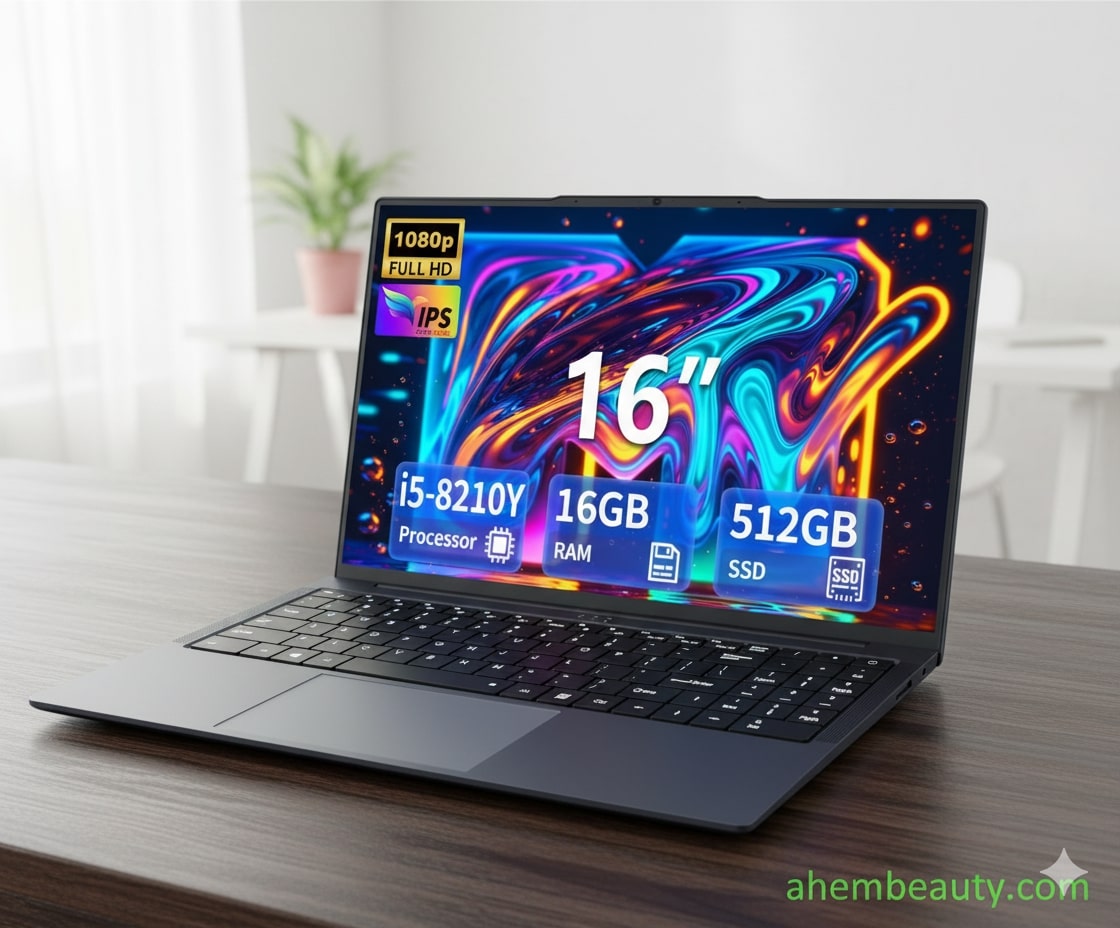
Following the slim KUU XBook Pro, attention now turns to a bigger alternative: a 16-inch business notebook built for productivity but capable of light gaming on the side. Unlike many budget competitors, this system combines extra screen real estate with memory and storage that feel generous in this segment. Analysts covering the budget space often describe it as “a practical performer that doesn’t need flashy branding to stand out.” That’s why it secures a place in our seven, giving buyers another solid entry in the hunt for good and cheap gaming laptops that deliver balance.
At first glance, the 16-inch display sets this machine apart. The 1920×1200 Full HD IPS panel gives more vertical space than a traditional 1080p screen, which helps when scrolling through long documents or multitasking. Narrow bezels reduce distraction, and the screen’s 180° hinge allows flexible positioning—from sharing slides in a group setting to leaning back for streaming. Reviewers highlight it as “a panel that makes work more comfortable without sacrificing entertainment.”
- Processor: Intel Core i5-8210Y dual-core, four-thread chip with boost speeds up to 3.6 GHz
- Memory & Storage: 16 GB RAM | 512 GB SSD
- Display: 16-inch FHD+ IPS, 1920×1200 resolution, 180° folding hinge
- Wireless: Wi-Fi 5 (dual-band), Bluetooth 5.0
- Battery: 5800 mAh, 7.6 V lithium polymer for extended use
- Ports: 1× USB 3.0, 2× USB 2.0, 1× Type-C, 1× mini-HDMI, 1× headphone jack, 1× DC-in, 1× TF card slot, 1× LAN port
- Weight: ~4.2 lbs
The Core i5-8210Y is modest compared to newer processors, but paired with 16 GB RAM and a 512 GB SSD, it handles multitasking reliably and keeps applications responsive. Boot times are fast, apps open quickly, and switching between tasks feels natural. Intel’s UHD integrated graphics limit demanding gaming, but indie releases, older AAA titles, and web-based games run fine at moderate settings. Reviewers note that cloud platforms extend its reach further, turning it into a lightweight gaming station when Wi-Fi conditions are solid.
A standout is the 5800 mAh battery, which comfortably supports a full day of study or work. The slim chassis, despite housing a 16-inch screen, is reasonably portable at just over 4 pounds. Heat management is efficient enough for everyday use, keeping fan noise low even during longer sessions. Its 180° hinge proves versatile for meetings, shared projects, or simple relaxation.
Industry observers say this laptop illustrates a trend in the value tier: larger displays paired with sufficient memory and storage, offering practical longevity without premium pricing. It isn’t meant to compete with ultrabooks, but rather to serve as a durable, affordable all-rounder.
| Pros | Cons |
|---|---|
| Large 16-inch FHD+ IPS display with extra vertical space | Core i5-8210Y is an older generation chip |
| 16 GB RAM and 512 GB SSD provide dependable multitasking performance | Integrated graphics restrict modern AAA gaming |
| 180° hinge proves versatile for collaboration or leisure | Slightly heavier than smaller competitors |
| Good connectivity with Type-C, HDMI, and LAN port | Wi-Fi 5 instead of Wi-Fi 6 |
| Long-lasting battery for work or study sessions | Plastic construction lacks premium finish |
This 16-inch business notebook may not carry the latest silicon, but it makes up for it with ample memory, storage, and a versatile screen. It’s designed for users who need a reliable workhorse that can also handle casual gaming and streaming without fuss. That practicality earns it a spot in our seven—proof that bigger displays and balanced specs can still find a home in the budget category.
HP Victus 15

From the practical 16-inch business notebook in Pick 6, we now arrive at the final entry: the HP Victus 15. Unlike its work-first predecessor, this model is unapologetically built for gamers. It brings a dedicated GPU, high-refresh display, and cooling tuned for longer play sessions—all at a price that still qualifies as accessible. Reviewers often call it “the sleeper gaming laptop that doesn’t look out of place in a classroom or office.” That balance of power and design is why it earns the closing spot in our seven.
HP keeps the look understated. The chassis is angular yet minimalist, avoiding the aggressive styling often seen in gaming rigs. The 15.6-inch Full HD IPS display supports a 144 Hz refresh rate, giving players smoother visuals and sharper motion tracking during fast-paced titles. Narrow bezels maximize screen space, and the backlit keyboard makes evening sessions more practical. It’s a design that serves both gamers and professionals who want something that doesn’t scream “gaming” in every setting.
- Processor: Intel Core i5-12450H, 8-core processor with hybrid architecture, boosting up to 4.4 GHz
- Graphics: NVIDIA GeForce GTX 1650 GPU with 4 GB dedicated VRAM
- Memory & Storage: 8 GB DDR4 RAM | 512 GB NVMe SSD
- Display: 15.6-inch Full HD IPS, 144 Hz refresh, narrow bezels
- Keyboard: Backlit full-size layout
- Wireless: Wi-Fi 6, Bluetooth 5.2
- Ports: USB-C, dual USB-A, HDMI 2.1, Ethernet port, and combo audio jack
- Weight: ~5 lbs
Here’s where the Victus 15 separates itself from previous entries. The Core i5-12450H delivers higher multi-thread performance than older chips, while the dedicated GTX 1650 provides smoother frame rates in esports staples like Valorant, Rocket League, and Fortnite. Mid-tier AAA games run acceptably at 1080p with medium settings. Multitasking feels quick with SSD storage, but users planning heavier game libraries should consider upgrading to 16 GB RAM for headroom. Reviewers summarize it well: “It feels like a gaming-first machine that still understands you need to send emails after the match.”
At ~5 lbs, it’s heavier than ultraportables but still manageable for backpacks. Battery life is modest—around 5–6 hours for productivity and much less under gaming loads. That’s the compromise for dedicated graphics. Heat is kept under control with an improved cooling system that maintains consistent performance during long sessions, though fan noise becomes noticeable when pushing harder titles.
Industry analysts highlight the Victus series as HP’s answer to the demand for affordable gaming rigs that double as everyday laptops. By toning down flashy aesthetics and focusing on real gaming performance, HP created a system that appeals to both students and first-time buyers entering the gaming market. It rounds out our list as a proof point that entry-level GPUs still have a place in good and cheap gaming laptops.
| Pros | Cons |
|---|---|
| Dedicated GTX 1650 GPU provides real gaming capability | 8 GB RAM is limiting for modern game performance (upgrade recommended) |
| 144 Hz display improves motion smoothness for esports | Battery life drops quickly under gaming loads |
| Intel i5-12450H delivers strong multi-core performance | Heavier than non-gaming budget notebooks |
| Backlit keyboard useful for late-night use | GTX 1650 shows its age compared to the latest budget-friendly GPUs |
| Balanced styling for both gaming and professional settings |
The HP Victus 15 closes our lineup with a clear message: you don’t need to spend a fortune for dedicated graphics and a 144 Hz screen. It’s not the lightest or longest-lasting option, but it delivers real gaming performance while maintaining an approachable price point. For students, casual gamers, or anyone stepping into PC gaming for the first time, the Victus 15 stands as a reliable finisher to our seven—proof that affordable gaming laptops can still deliver thrills.
Editorial note: Across all seven picks, a theme has emerged—budget no longer means boring. From cloud-ready Chromebooks to Ryzen-powered expandables and this gaming-first HP, today’s cheapest gaming laptops cover nearly every kind of buyer. That diversity is newsworthy in itself. As we step into the next wave of computing, readers should remember: smart engineering, not just raw specs, is what makes a laptop truly valuable.
Comparison Table: 7 Best Budget Gaming Laptops
| Pick | Model | Processor | Memory & Storage | Display | Graphics | Weight | Highlight Feature |
|---|---|---|---|---|---|---|---|
| 1 | ASUS Chromebook CM1402CM2A | MediaTek Kompanio 520 (8-core, 2.05 GHz) | 4 GB RAM, 64 GB eMMC | 14” HD (1366×768) NanoEdge | Integrated | ~3.1 lbs | Military-grade durability + Antimicrobial Guard |
| 2 | KAIGERR TX16PRO | AMD Ryzen 7 5700U (8C/16T, up to 4.3 GHz) | 16 GB RAM, 512 GB SSD (expandable) | 16” IPS, high-refresh | Integrated Radeon | ~3.5 lbs | Upgrade-friendly (64 GB RAM / 2 TB SSD) |
| 3 | Acer Aspire 3 (A315-24P) | AMD Ryzen 3 7320U (Quad-core) | 8 GB RAM, 128 GB SSD | 15.6” Full HD IPS | Integrated Radeon | ~3.9 lbs | Improved cooling + AI noise reduction |
| 4 | Dell Inspiron Plus | Intel Core (latest AI compute platform) | Up to 16 GB RAM, 512 GB SSD | 15.6” Full HD | Intel Iris Xe | ~4.0 lbs | AI-ready features + aluminum build |
| 5 | KUU XBook Pro | Intel Celeron N5095 (Quad-core, 2.9 GHz) | 12 GB RAM, 512 GB SSD | 15.6” Full HD IPS | Intel UHD Graphics | ~3.7 lbs | Fingerprint login + slim lightweight design |
| 6 | 16-Inch Business Laptop | Intel Core i5-8210Y (Dual-core, 3.6 GHz) | 16 GB RAM, 512 GB SSD | 16” FHD+ IPS (1920×1200) | Integrated UHD Graphics | ~4.2 lbs | 180° hinge + extra vertical screen space |
| 7 | HP Victus 15 | Intel Core i5-12450H (8-core, 4.4 GHz) | 8 GB RAM, 512 GB SSD | 15.6” Full HD IPS, 144 Hz | NVIDIA GTX 1650 (4 GB VRAM) | ~5.0 lbs | Dedicated GPU + high-refresh display |
Our Popular Articles
How We Chose These Laptops
In gaming, even budget-friendly setups need CPUs that can juggle multitasking. For this roundup, we skipped outdated dual-core chips and prioritized processors like Ryzen 3/5 and Intel Core i5, which offer balanced performance and efficiency for gaming and everyday tasks. A quad-core entry is the minimum, while laptops with 8-core hybrids give a meaningful edge in both gaming and everyday use.
We considered 8 GB of RAM the baseline requirement—sufficient for light workloads but already showing its limits with today’s games. Systems offering 16 GB, or expandable slots for future upgrades, scored higher because they add longevity to the purchase. On storage, SSDs were a non-negotiable. Traditional hard drives simply slow everything down, while even smaller NVMe options keep systems feeling quick and responsive.
Resolution and refresh rate were key. At minimum, Full HD (1920×1080) made the cut, since HD panels already feel dated in 2025. For gamers, 144 Hz displays were prioritized where possible, since smoother motion directly impacts play in esports titles. Wide color IPS screens also added points, especially for users who switch between gaming, streaming, and coursework.
While gaming rigs often trade weight for performance, we focused on laptops that remain practical for students, commuters, and professionals. Systems above 5 lbs were only included if their specs justified the bulk, such as dedicated graphics. Lightweight builds with long battery life stood out for those who need gaming and productivity on the move.
Budget shouldn’t mean fragile. Military-grade testing, spill-resistant keyboards, and even antimicrobial coatings showed us which brands thought about real-world usage. Security features like fingerprint readers and privacy shutters were also valued, since they reflect attention to the needs of students and remote workers.
In short, these aren’t just the cheapest machines we could find—they’re laptops chosen for balance. We looked for devices that deliver playable frame rates, dependable performance, and everyday usability. As one analyst told us, “budget buyers aren’t asking for luxury—they’re asking for reliability.” That’s the standard we applied when building this roundup.
Buying Guide: What to Look For in Budget Gaming Laptops
A gaming laptop lives and dies by its processor. Entry-level machines should at least carry a modern quad-core chip. Ryzen 3 and Ryzen 5, or Intel’s Core i5 line, give you the right mix of multitasking strength and efficiency. Dual-core models may look cheaper, but they can choke when running multiple apps alongside a game. For anyone expecting more than browser-based titles, choosing the latest processor generation pays dividends in smoother gameplay and longer device lifespan.
Not every budget laptop comes with a dedicated GPU, but that doesn’t mean they’re out of the running. Integrated Radeon or Intel Iris graphics are fine for lighter titles, indie games, or cloud-based platforms like GeForce NOW. However, if you want native performance, an entry-level card like NVIDIA’s GTX 1650 still makes a dramatic difference. It may be aging, but it remains the line between “playable” and “struggling.”
Think of RAM as elbow room. While 8 GB is a minimum, it often hits its ceiling with modern titles. That’s why 16 GB, or expandable slots, add real value. Storage is just as important. Solid-state drives (SSDs) dramatically cut boot times and reduce loading screens compared to older hard drives. Even a smaller NVMe SSD feels miles faster than a larger mechanical drive, and 512 GB is the sweet spot for balancing game installs with personal files.
Resolution matters, but refresh rate can be even more critical for gamers. Full HD (1920×1080) is non-negotiable in 2025, as HD panels are already outdated. For esports players, a 144 Hz panel is a game-changer, improving motion tracking and responsiveness. IPS technology also makes a difference, delivering better color reproduction for those who mix gaming with media or creative work.
While budget gaming laptops aren’t featherweights, portability still matters for students and commuters. Anything over 5 pounds becomes noticeable in a backpack. Battery life is another factor: most gaming systems struggle to last long under heavy loads, but efficient processors and larger batteries can stretch usability for study sessions, travel, or office work.
A laptop that fails after one spill or a rough commute isn’t value, no matter the price. That’s why features like spill-resistant keyboards, privacy shutters, military-grade testing, or even antimicrobial coatings stood out in our selections. They might not boost frame rates, but they extend peace of mind.
When shopping for budget gaming laptops, balance is everything. Don’t chase the lowest price tag—look for systems that offer enough processing power, RAM, and SSD speed to remain useful for at least a few years. Displays and build quality matter just as much as raw specs. In this category, the smartest buys are those that cut corners in the right places, without sacrificing the essentials that keep a laptop dependable.
Real-World Scenarios: Matching Laptops to Different Gamers
If your day swings between lectures, group projects, and a few rounds of Fortnite, portability matters as much as performance. The ASUS Chromebook CM1402CM2A is built for this role: light enough to carry all day, rugged against bumps, and perfect when paired with cloud gaming. It’s not a powerhouse, but it thrives in campus life where resilience and battery life outweigh raw specs.
Not everyone is chasing max frame rates. Some want a machine that streams Netflix, edits a paper, and runs League of Legends without fuss. The Acer Aspire 3 fits neatly here, with a sharp 15.6-inch Full HD screen and efficient Ryzen processor. It won’t push AAA titles at ultra settings, but it delivers reliability that budget buyers often value more.
A system that can handle video calls, documents, and light play while fitting in a backpack is a rare find. That’s where the KUU XBook Pro makes sense. Its slim frame, fingerprint login, and SSD responsiveness suit professionals who need security and speed, but who also want to relax with casual gaming after hours.
The Dell Inspiron Plus earns a spot for those experimenting with AI tools, content creation, or multitasking beyond the basics. Reviewers highlight its AI integration and sturdier aluminum build. It’s a machine that looks as comfortable in a design studio as in a classroom, offering features not often found in budget laptops.
Bigger displays can transform how you work and relax. The 16-inch Business Laptop offers a taller 1920×1200 panel paired with a 180° hinge, making it adaptable for everything from editing spreadsheets to streaming shows with friends. With 16 GB RAM, it also feels less restricted when juggling apps.
Dedicated graphics still make a difference, especially in competitive titles. The HP Victus 15 stands out as the gaming-focused option in this roundup. Powered by a GTX 1650 GPU and paired with a 144 Hz display, it delivers smoother visuals and steadier frame rates than integrated solutions, giving players an edge in fast-paced matches.
Each laptop earns its place by excelling in a different lifestyle scenario. From cloud-ready Chromebooks for students, to upgrade-friendly Ryzen machines, to dedicated-GPU rigs for esports beginners, this lineup proves that budget buyers no longer have to settle for one-size-fits-all solutions. The right choice depends not just on specs—but on how you actually live, work, and play.
Expert Commentary & Trends in Budget Gaming Laptops
In the past, affordable laptops struggled to run demanding titles. Today, platforms like Xbox Cloud Gaming and GeForce NOW are rewriting expectations. A Chromebook paired with Wi-Fi 6 can now stream games that once required a $1,500 rig. This shift is why models like the ASUS CM1402CM2A earn a spot here—they prove that budget doesn’t have to mean compromise, if cloud services are part of your toolkit.
Dell’s Inspiron Plus shows another trend: artificial intelligence is no longer reserved for high-end ultrabooks. Whether drafting documents, cleaning up video calls, or optimizing workflows, AI-ready processors are creeping into mid- and even entry-level systems. Experts say this move will blur the line between “budget” and “premium” use cases in the next two years, giving buyers more long-term value for their dollar.
NVIDIA’s GTX 1650, found in HP’s Victus 15, remains the entry ticket to real gaming performance. Yet industry watchers note it’s nearing the end of its lifecycle. While it still powers esports titles comfortably, newer cards like RTX 3050 are starting to appear in budget ranges. Analysts expect the next generation of “good and cheap gaming laptops” will push GTX-series cards out entirely, making this lineup a transitional moment.
One of the quieter but important trends is build quality. From military-grade testing to spill-resistant keyboards, manufacturers are realizing that budget buyers want reliability, not disposable devices. This shift reflects feedback from students and professionals who need laptops that last years, not months.
What ties these changes together is accessibility. Gaming, once a luxury hobby, is now a mainstream expectation—even for buyers shopping under $700. The rise of cloud services, falling SSD prices, and the spread of AI tools are ensuring that budget laptops no longer feel like “second-class citizens.” As one industry voice summed it up: “The definition of budget is being rewritten, and gamers are the ones who benefit.”
Frequently Asked Questions
Yes, but with limits. Most affordable systems handle popular esports like Valorant, Fortnite, and League of Legends without issue, while older AAA releases can still run decently when settings are lowered. For the latest blockbusters, cloud gaming services such as Xbox Cloud Gaming or GeForce NOW make budget systems far more capable than they used to be.
It’s the bare minimum. With 8 GB, expect occasional slowdowns when multitasking or running newer titles. For smoother performance, 16 GB is the sweet spot, especially if you want the laptop to last several years. Expandable models are ideal, since they let you upgrade later.
Not always. Integrated graphics (like Intel Iris Xe or AMD Radeon integrated GPUs) can handle casual play and streaming-based platforms. But if you want consistent native performance in 1080p titles, a dedicated GPU such as NVIDIA’s GTX 1650 or newer still makes a noticeable difference.
A 144 Hz screen offers smoother visuals, especially in fast-paced esports, where every frame counts. Casual players may be fine with 60 Hz, but competitive gamers benefit from the higher refresh rate. Even in budget laptops, this feature is increasingly common and worth prioritizing if gaming is your focus.
Not under gaming loads. Most deliver 3–5 hours of play before needing a charger. For everyday tasks like browsing, streaming, or note-taking, some stretch closer to 7–8 hours. If you need all-day unplugged use, efficiency-focused processors or Chromebooks are better suited.
Yes, many now feature spill-resistant keyboards, military-grade testing, or even antimicrobial coatings. While they may not match business ultrabooks, manufacturers are clearly investing in sturdier designs so that budget laptops survive campus life or frequent commutes.
If you need a laptop today, the current market already delivers excellent value. Prices have stabilized, and even entry-level systems now include SSDs, Wi-Fi 6, and upgrade options. However, keep in mind that older GPUs like the GTX 1650 are nearing the end of their cycle—waiting a few months may bring entry-level RTX cards into this price tier.
Affiliate Disclosure
Transparency you can count on
As an Amazon Associate, AhemBeauty.com earns from qualifying purchases.
AhemBeauty.com participates in various affiliate marketing programs, including the Amazon Services LLC Associates Program. This means we may earn a small commission if you purchase products through links on our site — at no extra cost to you.
Our recommendations are based on careful research, hands-on testing, and our genuine belief in the products we feature. These commissions help support the site and allow us to continue delivering honest, reader-focused content.
- Note: Prices and availability are subject to change after the time of publication.
- All affiliate links are clearly marked and use standard tracking parameters.

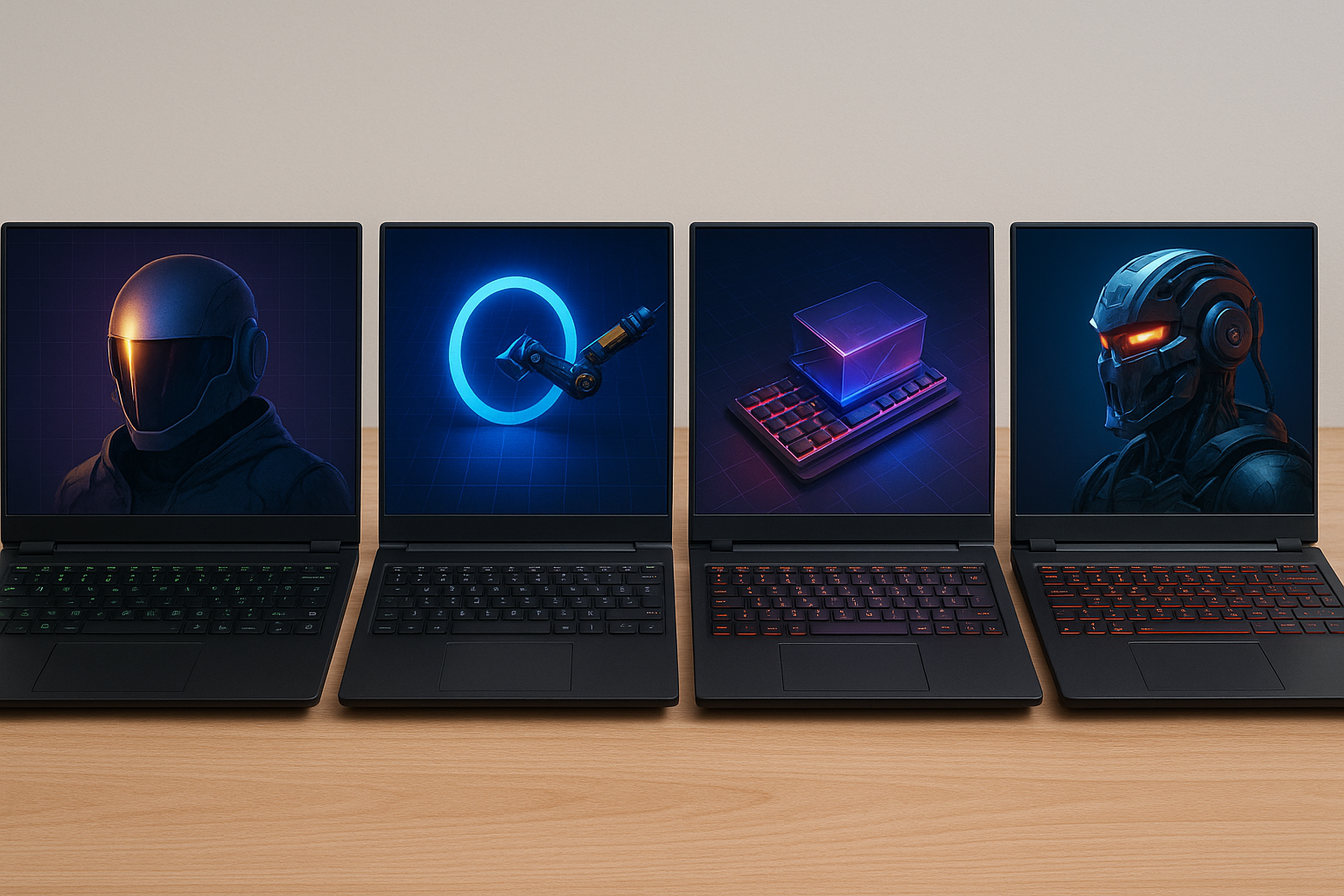
 By
By 